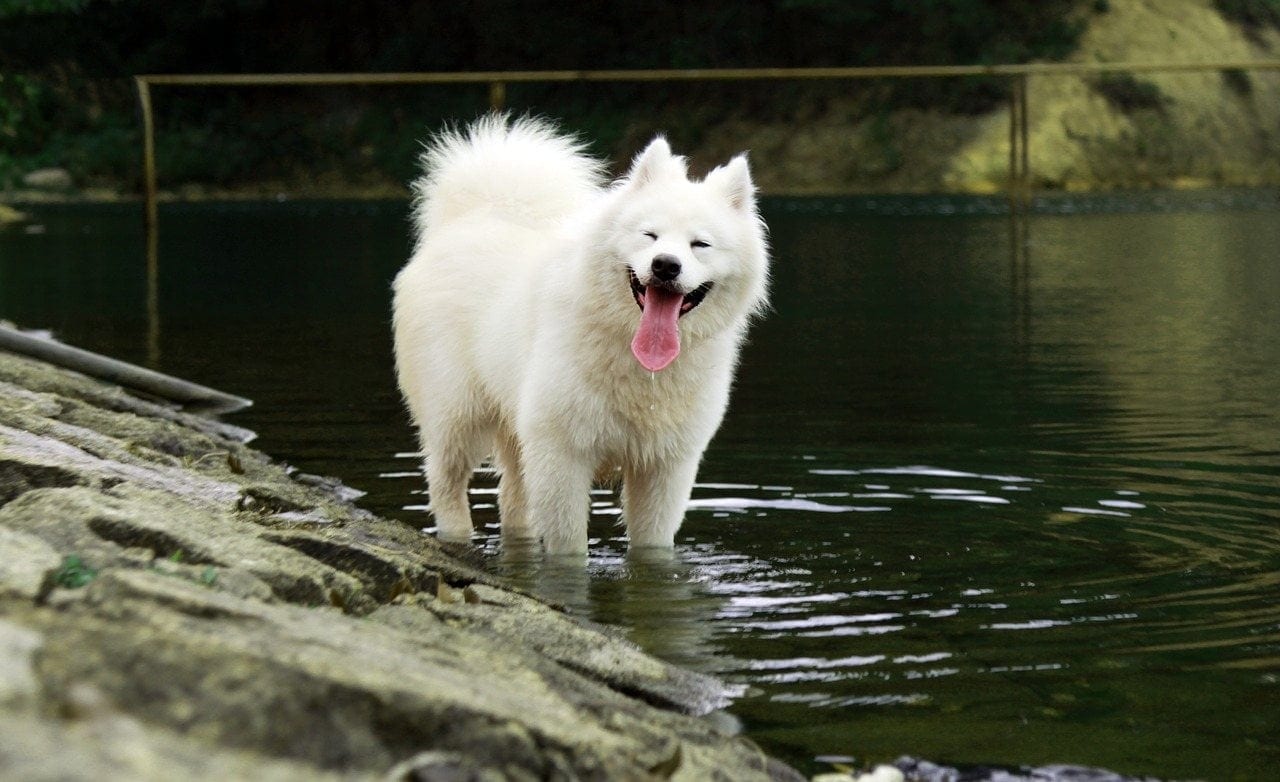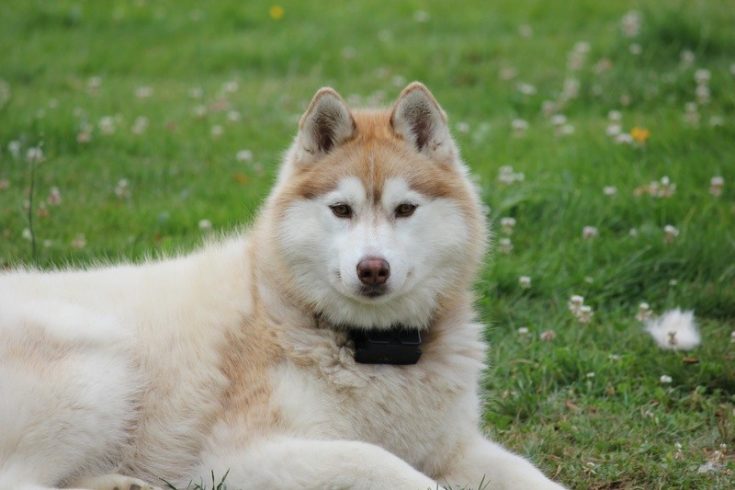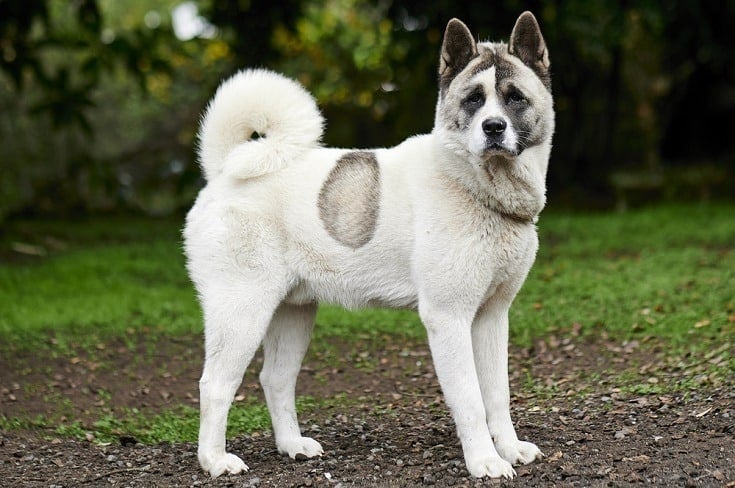12 Dog Breeds That Look Like Wolves

Updated on

Whether you like the idea of having an exotic pet or you’ve simply watched too much Game of Thrones, owning a wolf is certainly a tantalizing prospect. Of course, unless you have a small mountain of permits, wolves are illegal to own. So what about the next best thing — a dog that looks like a wolf?
The 12 breeds below will get you as close to owning the real thing (without going to jail).
The 12 Dog Breeds That Look Like Wolves
1. Siberian Husky

These dogs have the pointy ears and double coats that you’ll find on most wolves — and they even howl.
While Huskies enjoy the frozen tundra about as much as wolves do, they’re much easier to get along with. They’re also much smaller than actual wolves, which will come in handy if they ever decide to pounce on you.
Some breeders like to cross Huskies with wolves to make what’s known as a “wolf hybrid.” These tend to be less trustworthy, so be wary if you see one at your local dog park.
2. Alaskan Malamute

The Malamute is bigger and heavier than its Arctic cousin, but it’s still considerably smaller than your average wolf.
Malamutes tend to be devoted to their packs, just like wolves. The big difference is that a Malamute will let a human into its pack (although we suppose a wolf will, too — they just won’t let the human get out).
Malamutes are very stubborn dogs. However, if you train them correctly, they’ll make incredibly loyal, loving family pets.
3. Alaskan Noble Companion Dog
Many people may be unaware that this dog even exists, but then again, many people may just look at it and assume it’s a black wolf.
However, it’s actually a mix of Husky, Malamute, German Shepherd, Great Pyrenees, and more, and it’s been bred with a high degree of focus on trainability.
These dogs are still extremely rare, so you may go your whole life without seeing one. However, even if you do come across one, you may be too intimidated to come close enough to pet it (which is a shame because they’re really sweet dogs).
4. Kugsha

Why do Kugshas look so much like wolves? Well, because they’re wolf-hybrids, that’s why.
These dogs are the product of breeding wolves with sled dogs like Huskies and Malamutes. They’re big and powerful and they love to pull, so keep that in mind when you get the leash out.
If you ever decide to adopt a Kugsha, you’d better be confident in your training abilities, and don’t leave it alone for hours at a time, because as it turns out, wolves get destructive when they get lonely.
5. Czechoslovakian Wolfdog
This is another wolf-hybrid dog, except it hails from Eastern Europe (one guess as to where). The idea was to have an animal as large and powerful as a wolf but as sweet and trainable as a German Shepherd.
They were originally used as attack dogs, but can make excellent family pets if given lots of training and strong leadership. However, these dogs can run over 60 miles a day through extreme conditions, so don’t expect it to be content to sit around watching Netflix with you all day.
6. Tamaskan

Hailing from Finland, Tamaskans are made from a wide variety of Husky and Eskimo dogs. They tend to be bigger than your average sled dog but still considerably smaller than most wolves.
Once they’re fully-grown, though, they really look like wolves, complete with straight, bushy tails and thick, gray coats. Some of them even have yellow eyes, which doesn’t sound creepy at all.
Tamaskans are sweet and friendly, but don’t be surprised if people in the neighborhood give you a wide berth on walks — because to them, you’ll look like a psychopath who’s walking a wolf down the street.
7. Swedish Vallhund

“Vallhund” technically means “herding dog,” but we’re going to choose to believe that it actually translates to “low-rider wolf.”
These short little dogs look like a cross between wolves and Corgis, but that’s only because experts think they originated when the Vikings crossed wolves with Corgis.
As you might expect from a Viking dog, these pups aren’t wallflowers. They love to make their presence known, so they’re not ideal for apartment dwelling or living anywhere with neighbors within a few miles.
8. Utonagan

Bred in England from a mix of Malamutes, Siberian Huskies, and German Shepherds, the Utonagan dates back only a few decades, to the 1980s.
Utonagans are certainly friendly and are often used as therapy dogs in schools and hospitals. They rarely show aggression, except against your couch when left alone too long.
They’re also quite accomplished escape artists, so you’ll need a tall, sturdy fence to keep them safe at home because the last thing you want is to come home to find the neighborhood on high alert due to reports of wolves in the area.
- Related Read: How Much Does a Utonagan Cost?
9. Saarloos Wolfdog

As you’ve probably figured out by now, if it’s called a “wolfdog,” that’s probably because there’s actual wolf in that dog. The Saarloos Wolfdog is no exception, as it’s the product of a breeding program that merged German Shepherd males with female European wolves.
The end result looks like a slender version of a wolf, although males can get up to 100 pounds.
Saarloos Wolfdogs tend to be extremely loyal to their owners and reserved to strangers, making them excellent guard dogs. After all, nothing will keep a house safe like posting signs that say, “Guard Wolf on Duty.”
- Related Read: How Much Does a Saarloos Wolfdog Cost?
10. Samoyed

These big dogs are like extremely fluffy wolves, and they were originally bred to pull sleds and hunt reindeer by the Samoyedic peoples of Siberia.
While they may share some physical characteristics with wolves, they’ve certainly lost their aggressiveness, and they make terrible guard dogs. Instead, they’d much rather cuddle up with you at night and help keep you warm.
One of the most recognizable features of the breed is the “Sammy smile,” which helps immediately put people at ease. Then again, maybe they’re just smiling because they’re thinking about how good you must taste…
11. Northern Inuit Dog
Another relatively recent product of cross-breeding between Huskies, Malamutes, and German Shepherds, the Northern Inuit Dog was developed in the United Kingdom in the 1980s.
These dogs are extremely stubborn and strong-willed. They usually need another dog around to keep them company, but owners may be startled by their extremely rough style of play.
Northern Inuit Dogs are fairly difficult to train, which is why they’re a bad idea for novice owners. The good news is that they respond well to positive reinforcement.
12. Canadian Eskimo Dog

These majestic creatures were bred by Inuit peoples in Canada and the surrounding regions, as they needed an animal that was capable of pulling sleds, surviving harsh winters, and keeping polar bears away.
Most of these traits aren’t especially necessary for modern living (although it’s always nice to be able to keep polar bears away). As a result, Canadian Eskimo Dogs are at risk of extinction, with only a few hundred left in the world.
However, many breeders in Canada and the United Kingdom are working to keep the breed alive. Which is good, because otherwise, who would protect us from the polar bears?
Wild at Heart
It’s impossible to deny that these wolf-like dogs are majestic and adorable, but many of them are also fiercely independent, making them suitable for only the most experienced owners.
If you spend the time training and socializing them, however, you can enjoy owning one of the most stunning dogs your neighborhood has ever seen. Just don’t be surprised when your neighbors call on you to deal with any rogue polar bears in the area.
See Also:
- 15 Wolf Dog Hybrid Breeds You May Not Have Seen Before
- 8 Majestic Dogs That Are Bigger Than Wolves (With Pictures)
Featured Image Credit: Nataliia Pushkareva, Shutterstock











